Last week's problem, though undoubtedly clever and imaginative, was not really typical of modern selfmates. So, let us spend one more week with this genre, this time considering a real heavy-duty, barn-burner of a composition. It comes from Uri Avner, a prominent composer from Israel, and was composed in the early 1980s. The stipulation calls for selfmate in three. (Recall that in a selfmate problem, white moves first and forces black to give checkmate. Black, for his part, tries to avoid giving checkmate.)
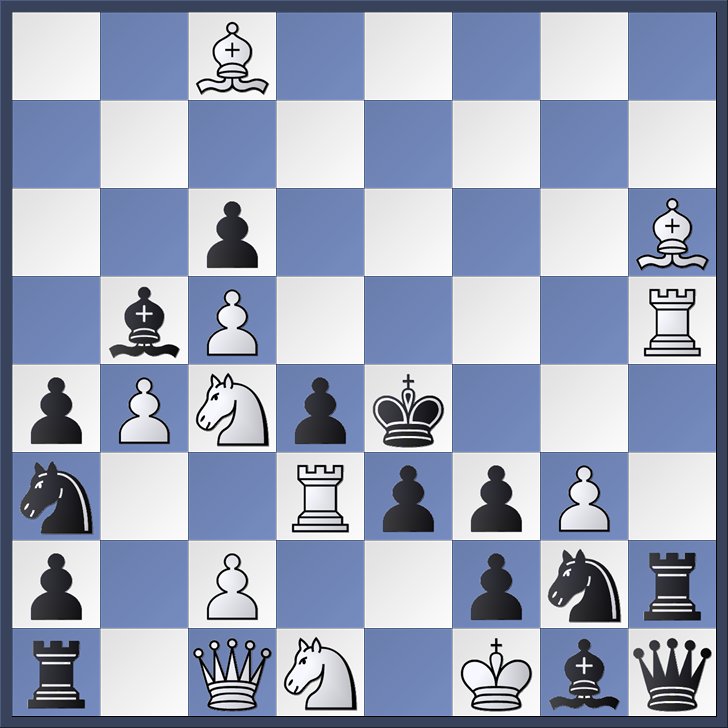
Recall that the vertical files are labeled a--h from left to right, and the horizontal ranks are labeled 1--8 from bottom to top. In the diagram, the white king is on f1 and the black king is on e4. White has rooks on h5 and d3, while black has rooks on a1 and h2. When we write down moves, a plus sign indicates a check, and an “x” indicates a capture. White is always moving up the board, and black is always moving down.
Selfmates often have heavy positions. The black force must be perfectly controlled, and this in turn often requires a large amount of white force to manage. But let's see if we can wade through the veritable forest of wood on the board, to see if we can make sense of what is happening.
The first thing to notice is the configuration of pieces on the a6-f1 diagonal, and the configuration along the first rank. Such configurations are referred to as half-pins. The idea is that if either of the white pieces moves off the line, then the remaining piece will be pinned.
The next thing to look for is how black will actually give checkmate. After considering the possibilities, you might come to the idea of white giving check by capturing the pawn on e3, to which black will have to reply with Nxe3. At the moment, that possibility looks a bit forlorn. All four of the half-pinned white pieces cover e3. So white's strategy will be to move two of the half-pinned pieces out of the way, so when the black knight arrives on e3 we will have a double pin-mate. (That is, a position that is checkmate only because two of white's pieces are pinned.
That might seem a bit confusing, but all will become clear when we consider a specific variation. The key move is 1. Bg7!:
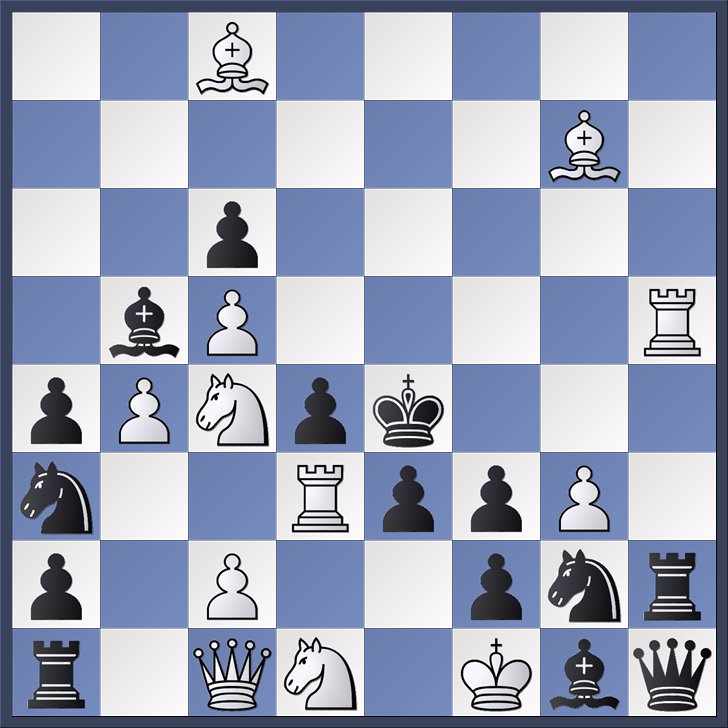
The threat is to follow-up with 2. Nc3+ dxc3 3. Rxe3+ Nxe3 mate.
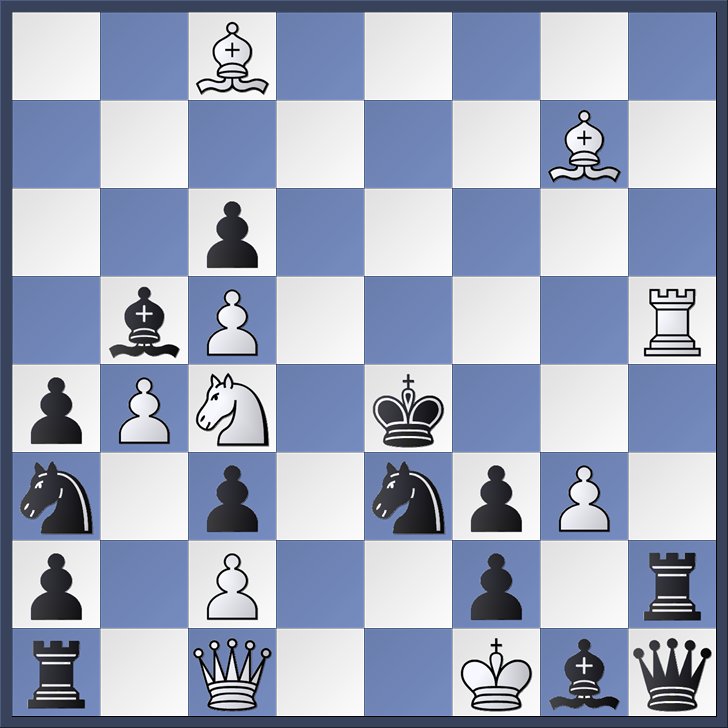
Get the idea? White is now checkmated, since his queen and remaining knight are pinned.
Black has several defenses to consider. Black could play 1. ... Rxh5 which defends by creating a new flight square for the black king on d5. If white tries to play his original threat, he will find that after Rxe3+ black will just move his king to d5, rather than take the rook with the knight.
But white can use this new flight square to his own advantage. He plays 2. Nd6+ Kd5 3. Nxe3+ Nxe3 mate, with another double pin-mate.
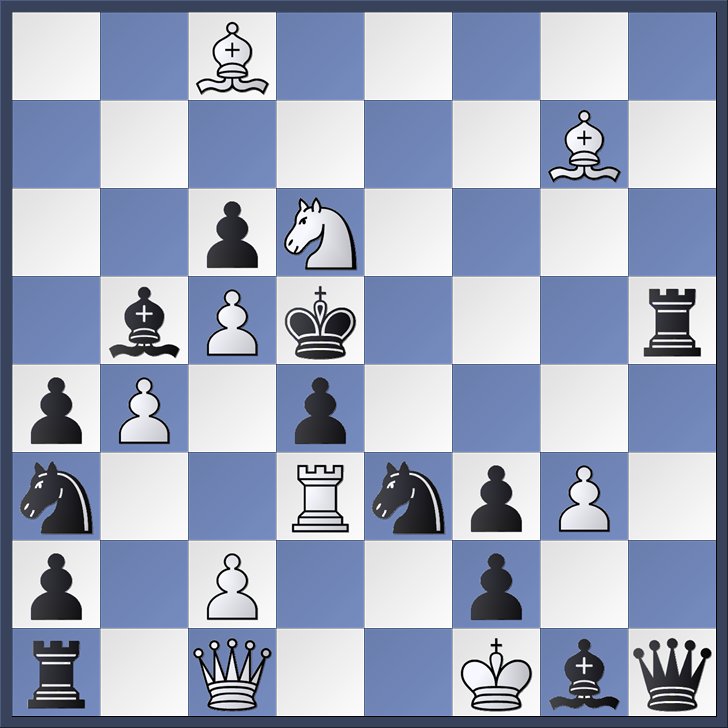
So black needs a different defense. He can try the somewhat brutal 1. ... Rxc1 which defeats the threat by pinning the white knight on d1. But white can take advantage of this with 2. Bf5+ Kd5 3. Nxe3+ Nxe3 mate.
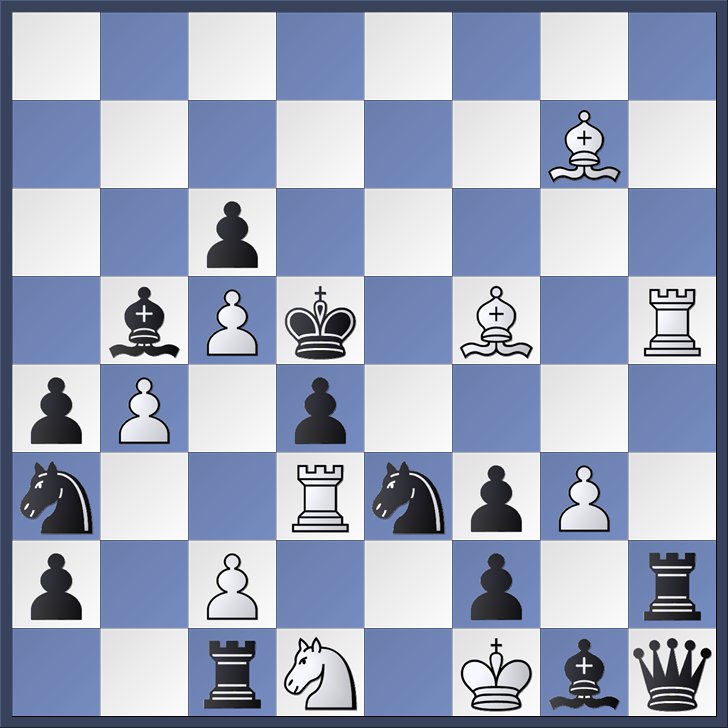
How about 1. ... Nxc2 for black? This defends by leaving the white rook unprotected on d3. If white goes ahead with his threat, then black will just take this rook at an opportune moment. This defense also puts an extra guard on d4, however, and white can exploit that with 2. Rxd4+ Nxd4 3. Qxe3+ Nxe3 mate.
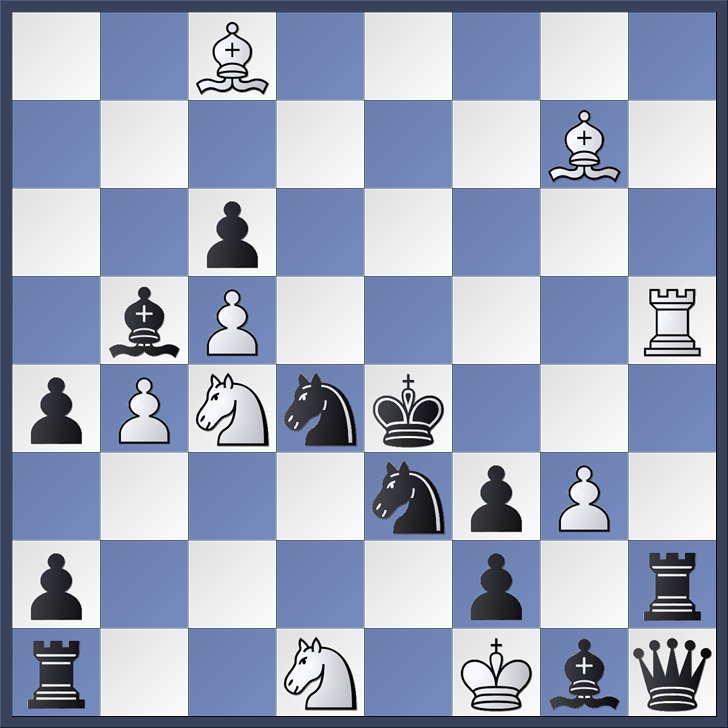
Notice that between the threat and the three variations we have considered, all four of the possible ways for white to have two of his pieces pinned have been realized. But there's actually another double pin-mate to discover! What if black defends with 1. ... Nb1? This blocks the pin line on the first rank, thereby defeating the threat. Sadly for black, the knight on b1 can now reach d2, which gives white a new possibility. He plays 2. Nxf2+ exf2 3. Nd2+ Nxd2 mate:
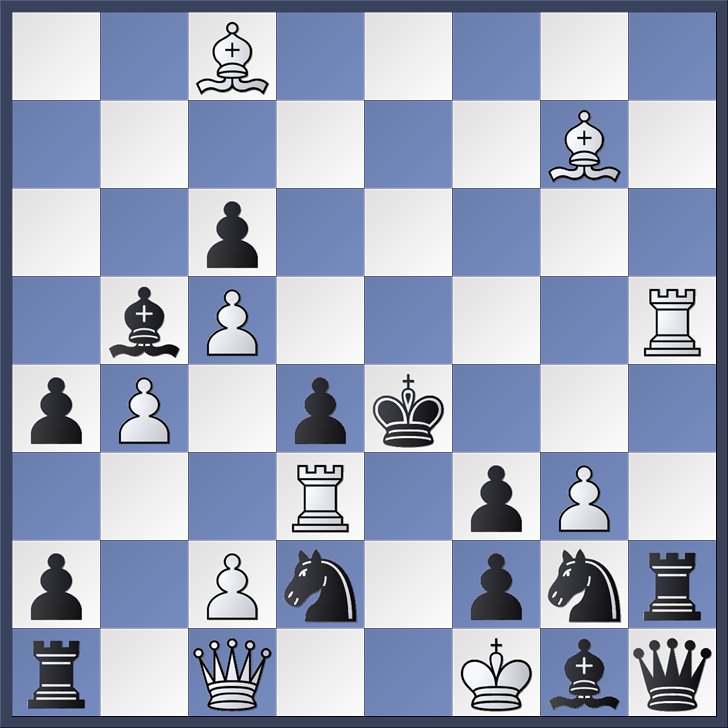
Pretty neat! For completeness, we should mention one additional possibility. Black can defeat the threat by moving his knight on g2, to anywhere. Let's say he plays 1. ... Nh4, just to make it concrete. If the knight is no longer on g2, then it is not available to capture any white piece that arrives on e3. This time the weakness is that a line has been opened for the black rook on h2. White achieves his goal with 2. Nd2+ exd2 3. Nf2+ Rxf2 mate:
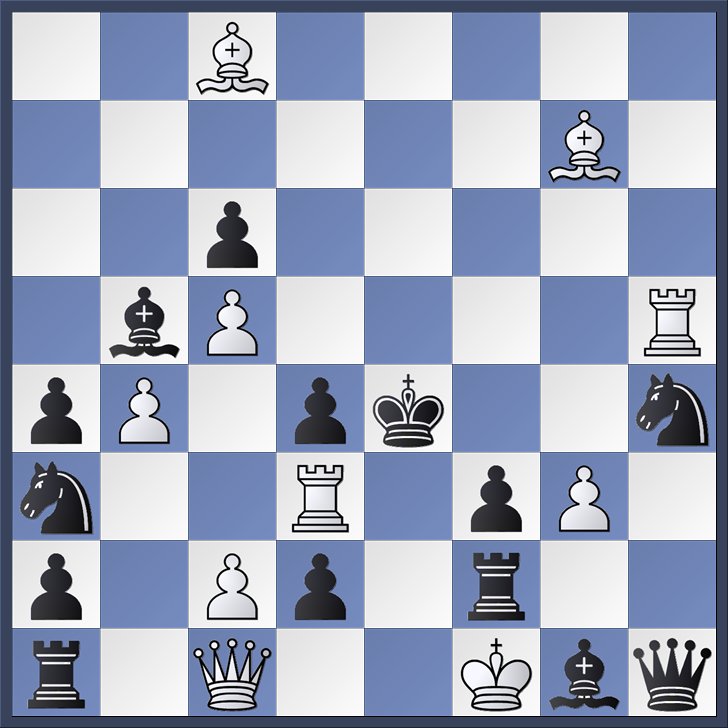
Of course, black could have taken with his bishop instead of his rook, but that is checkmate also. Not a double pin-mate this time, but not a bad variation all by itself.
It's incredible how much play a skilled composer can pack in to one position. But with that, we shall leave selfmates behind for a few weeks. Next week we shall return to sanity with a nice, traditional direct-mate problem. Stay tuned!
- Log in to post comments

It is interesting that if you know the artistic conventions of chess problems it can help you solve them. I know that the solution is not supposed to begin with check in a direct mate problem but after solving some self-mate problems I get the feeling that composers follow the same convention in self-mate problems.
Oh, and there is a typo in the main variation. The mating move should be Nxe3, not Mxe3.
Ugh, this position hurts my chess eyes.
There's always a typo! I fixed the error. Thanks for pointing it out.
Very, very nice. And a nice explanation, Jason. I myself suffered some of the abovementioned (by MNb) chess-eye hurt, and it got me thinking. For instance, what must traditional representational artists have thought upon seeing, say, the work of an abstract expressionist artist like deKooning? Must've flipped their eyelids, eh? But if they looked long enough, they'd see certain technique in the brushstrokes, and checking out enough of the small parts and their color and shape relationships, they would likely put together some semblance of an overall structure, and I'd bet that if they kept at it they'd be bound to have some serious respect for this "incorrect" approach to visual artistry. Not that they'd "prefer" it, and they could still be "critical" of it, but they'd at least see it more for what it was.
Kinda what you're doing for us here, introducing us to a term like half-pin. I myself find myself appreciating the key move simply because it removes itself from that key square e3. (My first guesses all involved either the Q, or R, or B, or either N capturing on this square). Anyhow, fun stuff, and I look forward to next week's.